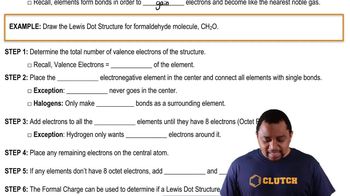Assume that 30.0 mL of a 0.10 M solution of a weak base B that accepts one proton is titrated with a 0.10 M solution of the monoprotic strong acid HA. (a) How many moles of HA have been added at the equivalence point?
How many milliliters of 0.0850 M NaOH are required to titrate each of the following solutions to the equivalence point: (b) 35.0 mL of 0.0850 M CH3COOH?
 Verified step by step guidance
Verified step by step guidance
Verified video answer for a similar problem:
Key Concepts
Titration

Molarity

Neutralization Reaction

Assume that 30.0 mL of a 0.10 M solution of a weak base B that accepts one proton is titrated with a 0.10 M solution of the monoprotic strong acid HA. (b) What is the predominant form of B at the equivalence point?
Assume that 30.0 mL of a 0.10 M solution of a weak base B that accepts one proton is titrated with a 0.10 M solution of the monoprotic strong acid HA. (c) Is the pH 7, less than 7, or more than 7 at the equivalence point?
How many milliliters of 0.0850 M NaOH are required to titrate each of the following solutions to the equivalence point: (c) 50.0 mL of a solution that contains 1.85 g of HCl per liter?
How many milliliters of 0.105 M HCl are needed to titrate each of the following solutions to the equivalence point: (a) 45.0 mL of 0.0950 M NaOH? (c) 125.0 mL of a solution that contains 1.35 g of NaOH per liter?
How many milliliters of 0.105 M HCl are needed to titrate each of the following solutions to the equivalence point: (b) 22.5 mL of 0.118 M NH3?
